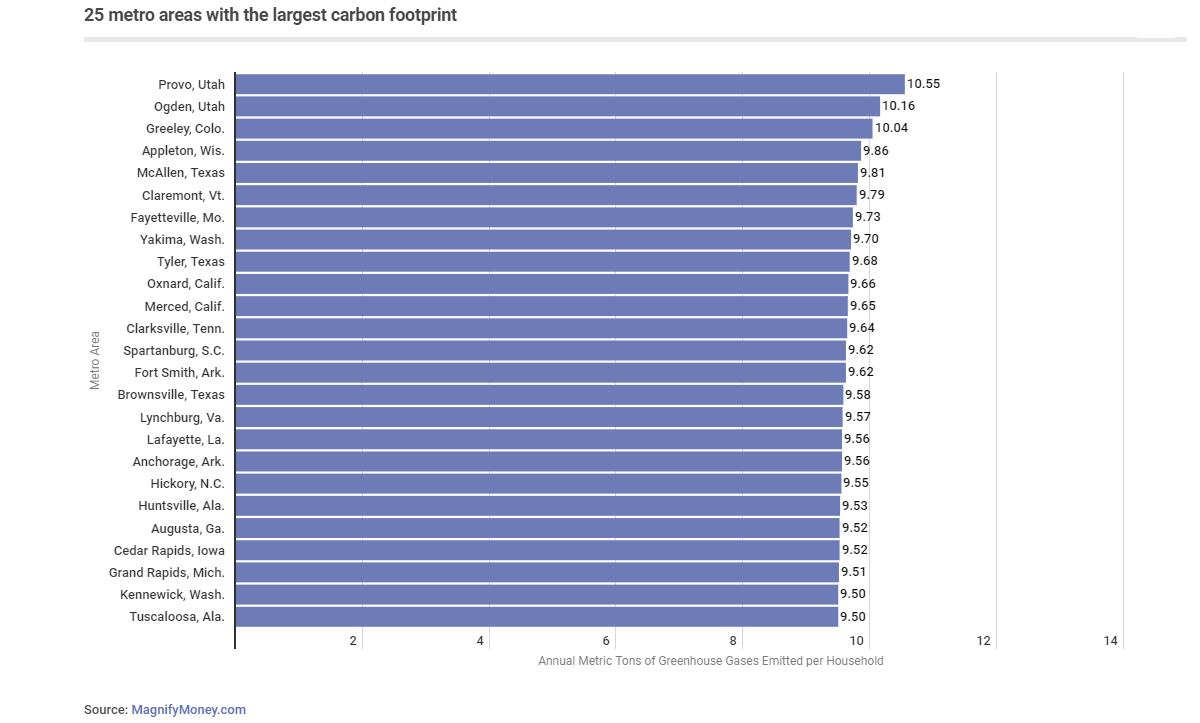Climate change is top of mind for many, leading consumers across the country to take steps to lower their carbon footprint. But who are the real culprits? Despite big cities ranking high in greenhouse gas emissions, a recent study by MagnifyMoney found that the top cities with the largest carbon footprint were those with a high reliance on cars for transportation and low usage rates of public transit.
Q3 2019 hedge fund letters, conferences and more
Cars drive high carbon footprints
In Provo, Utah, the city identified as having the biggest carbon footprint in the nation, households own an average of 2.1 cars and travel approximately 25,000 miles annually by car. Households in Ogden, Utah, the runner-up, own an average of 2.04 cars per household and travel approximately 24,000 miles annually. In both cities, only 2% of commuters use public transit.
On the other hand, New York City, where 56% of the population uses public transit, has one of the lowest carbon footprints. Urban density was another important reason why big cities like New York were found to have smaller footprints. Significantly less energy is used for buildings with multiple apartment units compared to single-family detached homes, the latter of which comprised 67% and 75% of households in Provo and Ogden respectively, compared to 37% in New York.
Cities with the Largest Carbon And why you should consider a more eco-friendly lifestyle
From 2007 to 2017, climate change has cost U.S. taxpayers $350 billion, according to a report from the U.S. Government Accountability Office. The study also predicts that the annual fiscal impact of climate change is expected to continue to grow, reaching as high as $112 billion by the end of the century.
Not choosing greener living can cost your household individually too, the MagnifyMoney study found. Residents of cities with the largest carbon footprints are spending thousands more annually on transportation costs compared to those in cities with the smallest carbon footprints. For example, New Yorkers spend about $10,000 annually, as compared to their counterparts in Provo who spend nearly $16,000.
Just by taking public transit and living with one less car, your household could save $10,000, according to the American Public Transportation Association. Making these lifestyle choices is also good for the planet, as further investments in public transit systems could cut down carbon emissions in the US by as much as 37 million metric tons annually.
If you have to drive to work, consider switching your vehicle to an energy-efficient car. Though sometimes pricier than traditional gasoline-fueled vehicles, the right financing can help you get a car that is better for the planet.






